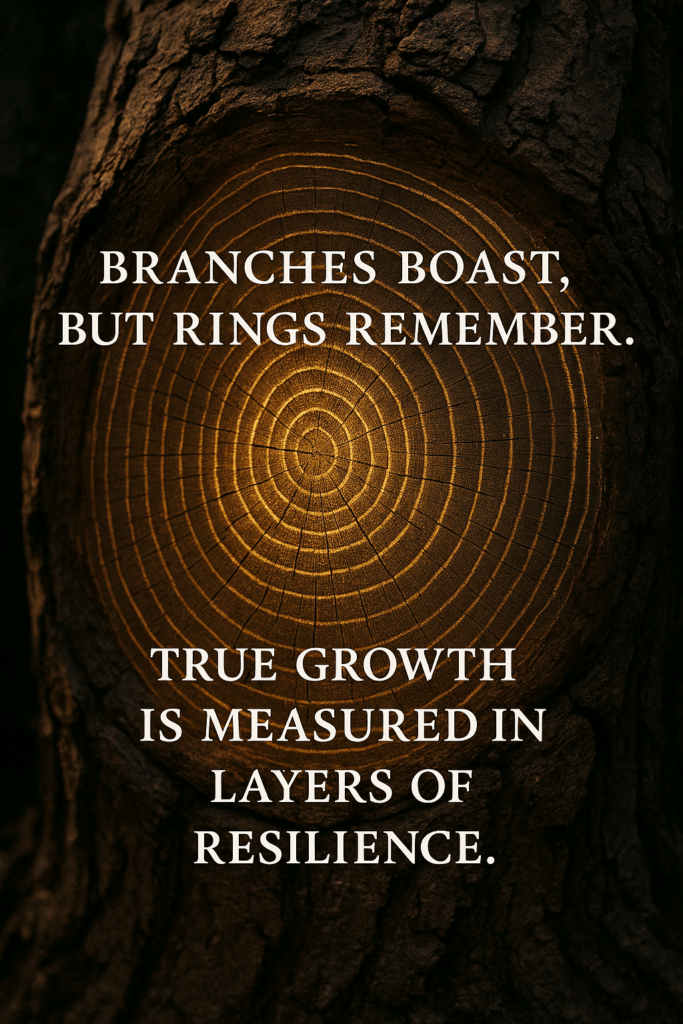
The evening was hushed, the greenhouse’s hum softened by the chorus of crickets outside. Emil sat at the kitchen table, the ledger open but untouched, his pencil idle between his fingers. The trial sites weighed on him—ten neighborhoods, each a storm of mistrust, expense, and labor. Crestview’s mural, Westfield’s canopy, Northwood’s boxes—they had bloomed in small soil. But the city? That was another matter.
Grandfather Tomas entered quietly, his walking stick tapping a familiar rhythm. He poured himself a cup of tea, the steam curling like threads of memory, before sitting across from Emil.
“You look at that ledger as though it might sprout without your hand,” he said gently.
Emil sighed. “We planted roots in schools, Grandfather. Now the council wants to see if they can hold in the hardest soil. But what if they break? What if the sprouts aren’t strong enough?”
Tomas’s eyes, lined by decades of storms, softened. “Do you know how a tree is measured, Emil?”
“By its height?” Emil guessed.
“That is what most see,” Tomas said, raising a finger. “But height is vanity. A tree’s true measure is in its rings—each a record of struggle. Years of drought, of flood, of storm. The rings do not lie, and they do not vanish. Even if the trunk falls, the record remains.”
He leaned forward, voice low but firm. “Your test of scale is not about proving perfection to the council. It is about planting rings into the city’s memory. Some roots will hold, some will falter. But if even one circle of fairness survives, it becomes a ring others can read, a witness that growth is possible.”
Emil traced the ledger’s edge, his doubt thinning. “So the test isn’t about showing strength now—it’s about leaving a record for later?”
“Exactly,” Tomas said, his hand steady on Emil’s shoulder. “The world demands harvests too soon. Councils ask for fruits before blossoms. But keepers must remember: it is enough to plant faithfully, to record truthfully. In time, others will see the rings.”
Outside, the wind rattled the cracked glass of the greenhouse. Emil thought of Crestview’s mural weathering graffiti, of Northwood’s boxes filling with whispers, of Marco’s rumors fading into echoes. Fragile, yes—but also rings, etched by resistance.
He opened the ledger and began to write, the pencil firm in his hand.
Ledger Entry — Rings of Growth
Date: October 12
Symptom: The city demands scale and quick results; fear grows that fragile sprouts may break under scrutiny.
Disease — The Four Absences (Impatience):
-
Absence 1 (Exclusion): Councils value outcomes over process, excluding the slow labor of trust.
-
Absence 2 (Vengeance): Skeptics punish failure harshly, breeding fear of trying.
-
Absence 3 (Dehumanization): Youth dismissed as “unready,” their roots unseen beneath the soil.
-
Absence 4 (Unheard Cry): The record of small triumphs ignored, though they testify to possibility.
Investigator’s Response: Reframed the test not as a demand for harvest but as a chance to plant rings into the city’s memory. Proposed to document struggles honestly, showing roots and scars alike.
Outcome: Confidence restored. Fragility embraced as evidence of life, not weakness. The ledger itself becomes a record—rings for future readers to learn from.
Note: Growth is not measured by height alone, but by rings carved in struggle. What survives is not always the tallest tree, but the truest record of its roots.

